17 Nov What to Bring Trekking in Peru: An Easy Packing List

On a trip to Peru, it’s likely you’re doing at least one multi-day trek whether it’s the Inca Trail, Salkantay, Santa Cruz, Huayhuash or others. If you’re joining a guided group organized by a tour company, they likely provide all of the camping equipment such as a tent, sleeping bag, sleeping pad, food, and maybe even a first aid kit. Therefore, you’re only responsible for bringing personal items. But what does that include? What exactly are all the things you need to pack?
I got you! Below is a general packing list of all the things you should pack for a trekking trip in Peru, if you’re going with a group / tour operator. After completing Salkantay, Santa Cruz, and Huayhuash myself, this list consists of exactly what I brought and some things I forgot and wished I had brought. I’ve also linked some suggestions for each item, if you don’t already own them.
*This post includes affiliate links and I may receive a small commission at no additional cost to you. By using my links you’re merely supporting what I love to do: write this blog! I only recommend products/companies that I use myself.
Majority of the packing products below are off Amazon, if you already own something similar, I recommend re-using and repurposing! Also for clothes, thrift shops are a great place to look as well.
Additionally, World Nomads provides travel insurance for travelers in over 100 countries. As an affiliate, I receive a fee when you get a quote from World Nomads using this link. I do not represent World Nomads. This is information only and not a recommendation to buy travel insurance.

Peru Trekking Packing List:
In your larger bag you should bring:
ClothinG, Accessories & shoes
- Breathable hiking clothes for cold and/or moderate and/or hot weather (make sure to research what to expect from climate on your trek)
- Leggings – depends on length of trek but I would suggest packing 2 pairs
- Waterproof hiking pants – 1 pair
- Long sleeve shirt(s) – depends on climate and length of trek but I would suggest packing 1-2 pairs
- Short sleeve shirt(s) – depends on climate and length of trek but I would suggest packing at least 2 pairs
- Pullover or hoodie for the cooler mornings
- Sports bras or hiking tank tops
- Underwear – bring some that are comfortable to hike in
- Thermal base layers for nighttime – especially if doing alpine treks like Santa Cruz and Huayhuash
- Warm layers to wear at camp and at night
- A sweater, pair of pants, and socks – knitted alpaca wool from Peru is a good option! They have so many cute sweaters, ponchos, hats gloves, & scarves in all towns
- Windbreaker jacket
- Rain jacket – I recommend no matter the time of year, just in case
- Beanie, gloves and a neck gaiter – this is good for protection against wind and sand/dirt being kicked up
- Baseball cap to protect your face from the sun – at high altitude the sun is really strong
- Supportive hiking boots – I saw so many backpackers just using sneakers which yes, in theory works but it’s good to have ankle support and durable, comfortable shoes that won’t give you blisters
- Hiking socks – I suggest higher socks to protect your ankles from cold, dirt, and mosquitos
- Camp shoes – you will not want to keep those stinky boots on at camp
In terms of clothing, don’t worry about bringing fresh clothes for every single day. In terms of space it’s just not practical. The most important thing is having fresh undergarments but other than that, everyone is going to be gross re-wearing clothes. It is what it is!
Face, Skin & Person Hygiene:
- Sunscreen – like I said the sun is really strong so bring plenty
- Bug repellent– this is less of an issue on alpine treks but definitely needed on treks at lower altitude to Machu Picchu
- Wet wipes – in the likely instance you don’t have access to a shower, these are so nice to freshen up after hiking
- Toilet paper – this is almost never provided so bring your own roll and a plastic bag to toss trash
- Face cleanser or face wipes
- Toothbrush & toothpaste
- Skin care & moisturizer- I wouldn’t bring your whole face routine, but I would recommend bringing any of your hydrating products because your skin gets so dried out at higher altitude and with harsh winds
- Diva cup – if you don’t use this, I recommend trying because it’s really not fun dealing with tampons in the wilderness and no where to throw them + I recommend bringing even if you’re not scheduled to get your period because you never know
- Body soap, shampoo and conditioner – IF you will have access to a shower, but double check before
- Hairbrush, hair ties, and headband
- Travel size containers for all toiletries listed
- Microfiber towel
Trek specific items:
- Hiking poles
- Altitude medication Acetazolamide, or Diamox – very different from solely a supplement
- Other medication in case of altitude sickness such as imodium, nausea meds, ibuprofen, & electrolytes
- Flashlight and/or headlamp
- Portable charger
- First aid kit and any supportive gear if you have a past injury – blister bandaids are great and a wrap for your knee or ankle if needed is helpful
- Pillow – I recommend an inflatable pillow but if you don’t want to buy that, at least bring a make-shift pillow weather its a sweatshirt or travel pillow because this makes a huge difference camping
- Something for down-time after hiking like a Kindle, book, journal and pen or card game
- Reusable filter water bottle – you can drink boiled water but it’s gross + you save plastic
Note that some tour companies (like the one I used for Huayhuash and Santa Cruz in Huaraz) provide duffle bags for you to pack these things in. This is nice because then the mules or horses carry this throughout so the weight of the bag doesn’t matter as much and there’s plenty of space (not to say you should overload the horses, but they are stronger than humans so a fleece vs a light-weight jacket that rolls up super tiny won’t make a huge difference).
However if a company doesn’t provide a bag, you’ll need to bring your own – backpack or duffle. Also a horse may not be carrying your things, it depends on the trek and company.
On a lot of treks in Cusco, like Inca Trail or Salkantay, a bag is not provided and you or a porter may need to carry the bag. Therefore you want to keep it as light as possible.
For all treks though, make sure to double check with your tour company about what the bag situation is, if there are weight limitations, and if you’ll need to carry it at any point.
Additionally, even though you larger bag will most likely be taken care of, you do need to also bring a day pack. Below is the list of things you should have with you during the day while hiking.
for your day-pack you should bring:
- Supportive backpack – even if it’s small, it can still be a bother to your back over longer hikes, so the more supportive, the better
- Waterproof backpack cover – in case it rains, I recommend this no matter the time of year
- Camera to capture the amazing views! – make sure to consider weight; if you have a big camera but aren’t a great hiker, your phone may be the better option because trust me, you’ll feel the camera weight
- Chapstick
- Diva cup – I keep this in my day bag just in case
- Hand sanitizer
- Tissue – I had a runny nose because of the altitude practically the whole time in Peru!
- Altitude medication and ibuprofen – bring a few tablets just in case because if you get altitude sickness it will most likely be WHILE hiking
- Toilet paper & plastic bag
- Snacks – these are typically provided in tour groups, but I also like to bring a stash of my favorites
- Water bottle
- Sunscreen & hat
- Layers for the day – whatever is expected of the weather, bring appropriate clothing
- Your passport and cash
Don’t worry too much about how to pack your day pack as your guide will give some tips each day, especially around what to expect for weather.
Lastly, remember this is a general list. Make sure to tailor your own packing to whichever trek you’re completing and to double check the weather so you know what to expect. For example, you need more warm layers for Huayhuash, but there’s only one really cold night during Salkantay so maybe you don’t need as many layers.
Additionally, you should triple check with your tour company about what they do provide and ask if there’s anything they suggest you bringing. It’s also not uncommon that if you don’t have an item such as hiking poles or even a warm jacket that they have it and will also lend items to you. Best thing you can do is ask!
For more Peru travel tips and recommendations, check out my resources below and some of my other blog posts. Happy trekking!
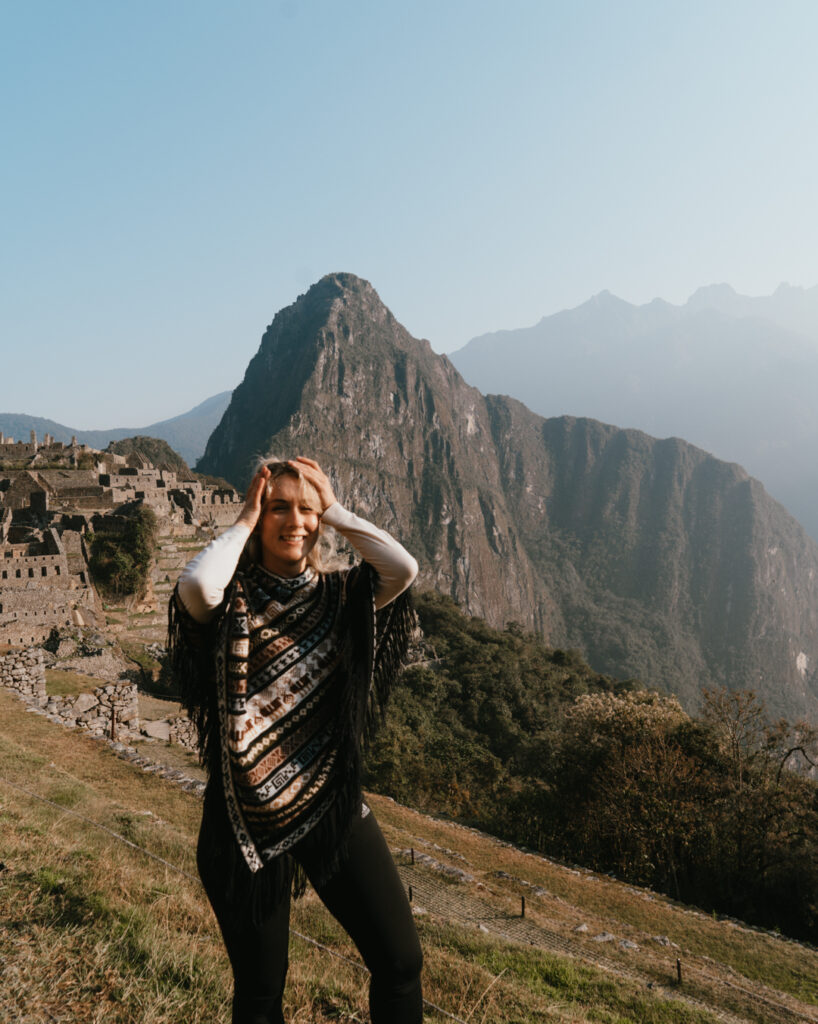
For more Peru travel tips and recommendations, check out my resources below and some of my other blog posts. Happy trekking!
More Resources for Your Trip to Peru:
HOSTELS
Hostels in Peru are very affordable costing on average from $8-10 USD. I always search for hostels via Hostelworld or Booking.com. Below are my favorites in specific areas.
Lima: 1900 Backpackers Hostels
Cusco: Kokopelli Hostel Cusco
Huaraz: Krusty Hostel or Selina
Ica/Huacachina: Banana’s Hostel
Arequipa: Le Foyer Arequipa
HOTELS & AIRBNBS
If you’re looking for a quick stay in a private room, then Airbnb has a lot of affordable options. However, if on vacation and not on a backpacker budget I would go with hotels so you can have a seamless trip. The best place to search in on Booking.com.
Below are some of hotel recs:
Cusco: Kokoa Hotel Cusco or Amaru Colonial
Arequipa: La Hostería Boutique Hotel and Le Foyer Arequipa
Flight to Peru
International flights to Peru are typically cheapest to Lima, but it is also possible to fly into Cusco or Arequipa. To get the best prices I recommend using Skyscanner.
Buses in Peru
Getting around Peru by bus is really easy to navigate. PeruHop is a good option however I preferred to be flexible and book rides on my own. I recommend searching on BusBud for bus options.
Travel Insurance
Travel insurance is a must for every trip to ensure you’re covered in unexpected situations. My go to travel insurance is WorldNomads which is made for backpackers. You can search for coverage here.
If you’re a digital nomad looking for travel medical emergency insurance, I also suggest Safety Wing.
Booking Experiences
If you have a flexible trip, I’ll honestly tell you that booking tours & experiences in person is the best & cheapest option. However, if you want to plan ahead especially for multi-day or popular tours, then GetYourGuide typically has the best prices.
Related posts
-
The Different Ways to Visit Machu Picchu Explained
Visiting Machu Picchu, one of the 7 new wonders of the world, is practically on everyone’s buc...
Destination Guides Peru -
What to Bring Trekking in Peru: An Easy Packing List
On a trip to Peru, it’s likely you’re doing at least one multi-day trek whether it’s the Inca Trail,...
Packing Essentials Peru -
Peru’s Huayhuash Trek: Ultimate Guide by a Solo Female Traveler
Named one of the 10 most beautiful treks in the world, the Cordillera Huayhuash circuit should absol...
Destination Guides Peru
Liked this post? Pin it!

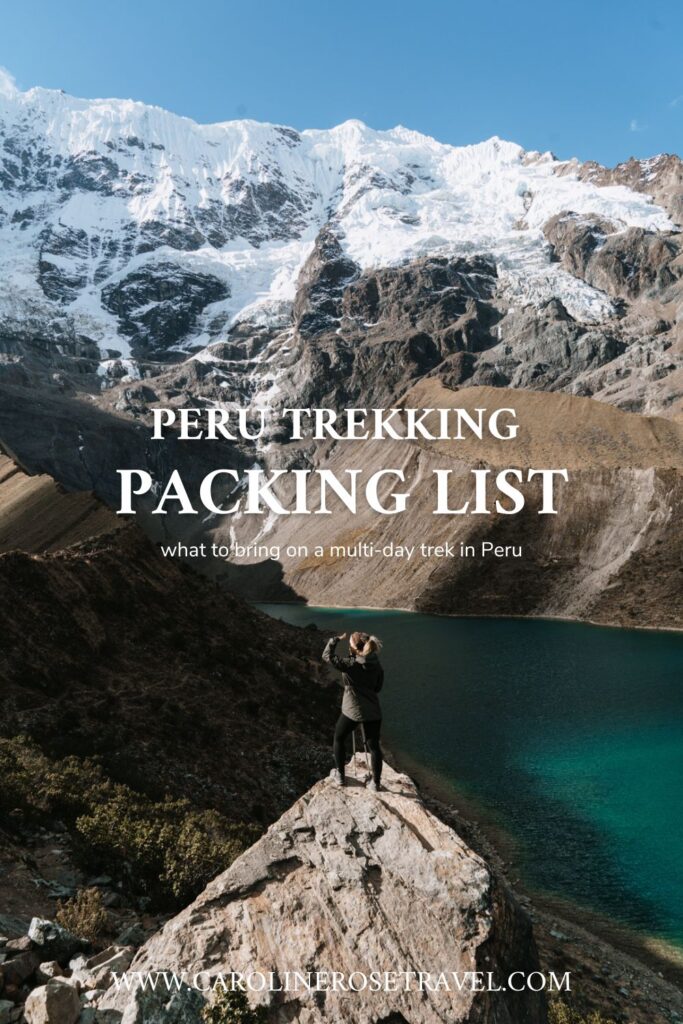


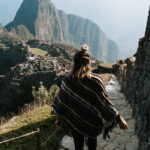
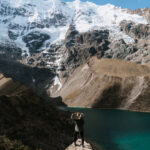


No Comments